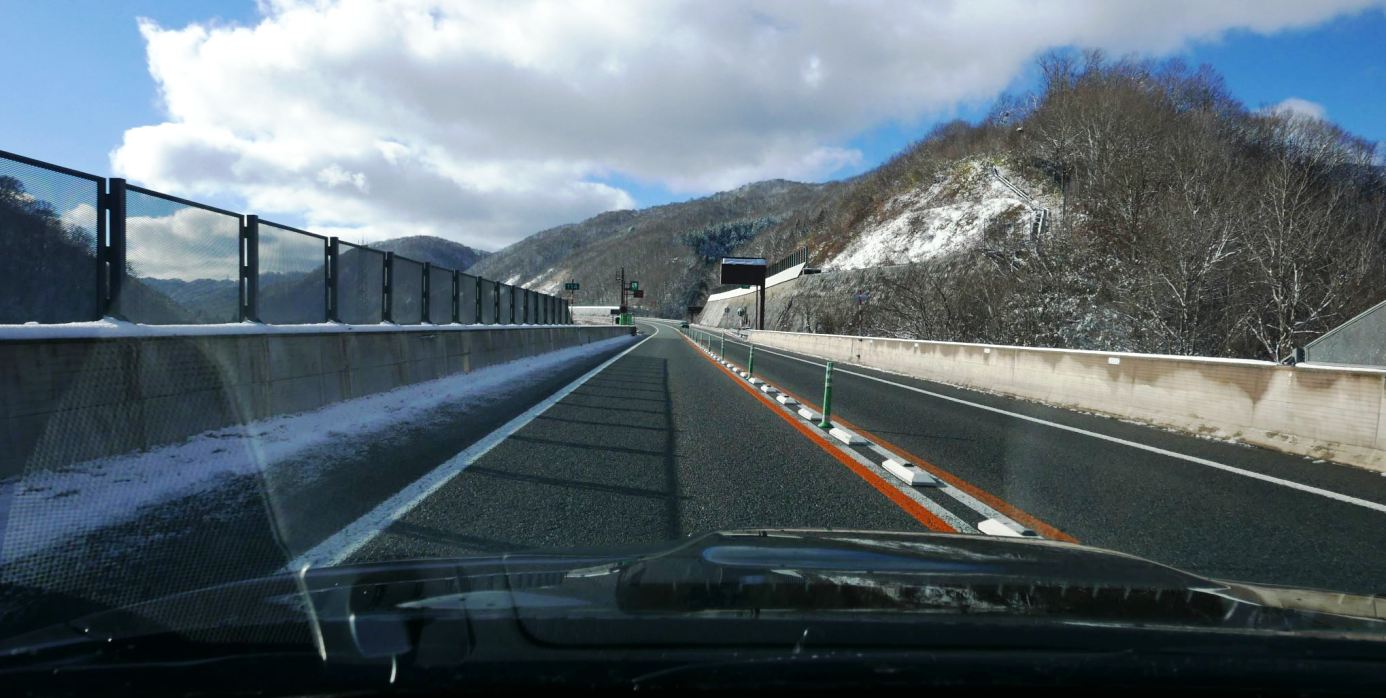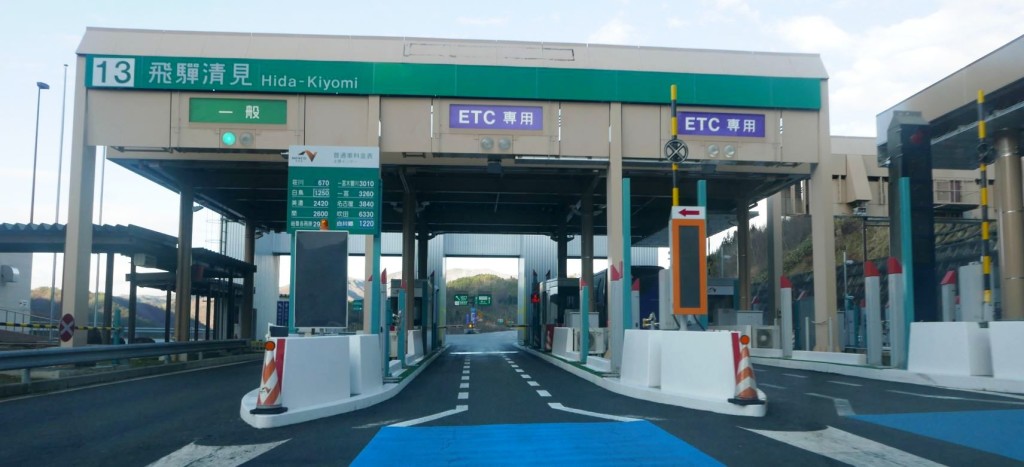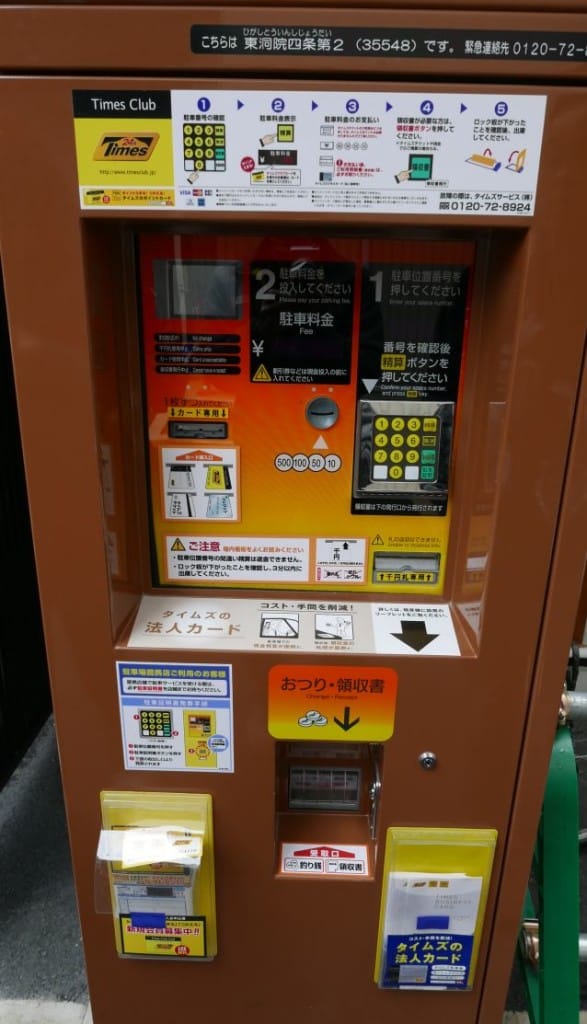I had the opportunity of renting a car and driving in Japan on a trip to Kyushu 2 years ago and more recently on a 10 day trip to central Japan from Nagoya to Matsumoto, Nagano, Shirakawa-go, Takayama, and Kyoto. On both trips I rented a car from ToCoo! Rent-a-car which I found to be competitively priced with great service.
Don’t be put off by advice you read online against driving in Japan. These apply mainly to big cities like Tokyo and Osaka due to congestion and limited/expensive parking. Also cost-wise you will be better off using their efficient public transportation if you are traveling alone or as a couple. But for a larger group it is worth considering renting a car if you plan on venturing out of the big cities. Plus you get to enjoy the scenery enroute while cruising on clear open roads.

Driving Rules
Cars in Japan are “right-hand drive”, ie they drive on the left side of the road unlike in the US or Europe. If you are not familiar with driving on the opposite side of the road it may present a small challenge initially but experienced drivers should be able to quickly adapt.
Car ownership is low in Japan unlike most developed countries. Outside of major cities, expressways are uncongested and free flowing. Speed limit is 80 to 100 km/h on expressways, 40 – 50 km/h in urban areas, 30 km/h in side streets. There are hardly any traffic police on the expressways as the onus is on you to exercise responsible driving without causing risk to other road users. However cars here do exceed the limit by a wide margin so do not be alarmed. Drivers are generally well mannered and considerate.
Road signs and rules follow international standards and most signs on major roads are in Japanese and English. Having an English GPS is a must in navigating the complex urban centers and expressways.
Unlike in the US, you cannot turn left on a red light just because there is no oncoming traffic. This may be acceptable in some countries but in Japan, unfortunately, it is against the law.
Electronic Toll Collection System (ETC)
Tolls are levied on expressways and some scenic routes. You will encounter many of them when you leave the city limits, sometimes as many as 5 or 6 tollgates on a 200km journey. The total toll from Nagoya airport to Matsumoto (about 260 km), costs ¥4850 (about US$40).

It is highly advisable to rent a car with an ETC card holder and also an ETC card (¥324). It will save you the trouble of stopping to pay toll. There are some tollgates with only ETC lanes. Without an ETC card this will be a problem.
The ETC card works like a credit card. It allows you to enter or exit an expressway without stopping. Just drive through the lanes with the ETC sign and the exact toll will be charged to the ETC card. When you return the car the rental company will do a printout of the toll charges incurred.
Here’s more info on how ETC works.
International Driving Permit (IDP)
Foreigners need to have an International Driving Permit (IDP) to drive in Japan. IDPs are generally issued by the Automobile Association of your home country. Apply for it in advance. Not every country has an agreement with Japan so it is best to check with your country’s embassy for more details. Every driver in your entourage will need one as well if he/she intends to drive.
Gas Stations
You will never run out of gas in Japan as gas stations are everywhere. Prices do vary so it’s best to check around. Full service stations costs slightly more. If you have no problems reading instructions in Japanese you may choose to use self-service stations. At the time of writing regular gasoline costs around ¥128 per liter.
Important: At time of rental enquire what type of gasoline your vehicle uses as incorrect refueling will cause serious damage to the vehicle and incur heavy penalties. Do not use light gas (aka diesel) unless you are very sure the vehicle runs on diesel.
Here are the types of gasoline and color codes:

Expressway Rest Facilities
There are many rest stops along the expressways. These rest facilities are very well maintained. The bigger ones have food courts, gift shops, gas stations, and clean toilets. They make “resting” a great experience too!
Parking
Parking in big cities is expensive. It will easily set you back several hundred yen an hour. It gets cheaper the further away you get from the city center. In small towns and the countryside parking is often free.
Some hotels charge a flat rate but these are relatively affordable, usually less than 5% of your room rate.

Finding Your Way Around
It had been a thoroughly enjoyable experience driving in Japan especially when you venture further afield from urban centers. GPS data is very reliable. Google has also got Japan well mapped out except for some minor roads in small villages. With these navigation aids the chances of getting lost is slim. Even in Kyoto I had no problems driving and parking as there are ample parking lots in the city center. Some places of interest like Fushimi Inari Taisha has free parking too.
How to Use Japanese GPS
There are many ways for the GPS to plot the route. The easiest way is to enter the phone number of the destination. Begin with “0” followed by the rest of the numbers. Phone numbers are easy to obtain for places like hotels, restaurants or shopping malls. Otherwise you may use something called Map Code, a proprietary navigation system unique to Japan. Here’s some useful information on how to find Map codes. I use both these methods. In addition I also check the distance and estimated arrival time with Google maps to make doubly sure that the destination is indeed the correct one.
This video below sums it up pretty well:
Driving in Winter
Be extra careful in winter if you are driving up north as conditions can be harsh. It is advisable to check the weather conditions and traffic warnings before you leave. Get the free Japan Road Traffic Info Viewer app (only available for iOS) for real time traffic updates. It is in Japanese so you need to allow it to overlay its data on Google Maps and you’re good to go.
You can also get real time traffic information in English at DriveTraffic.jp
Rent a car with winter tires or get a set of snow chains. ToCoo has snow tire packaged plans.

Other Useful Tips For Driving in Winter
1) Rent a pocket Wi-Fi router to stay connected on the go. I rented mine from Wifi-Hire.com, one of the cheapest I found. Costs ¥876 ($7.30) per day inclusive of taxes and fees. They have counters at most airports for easy pickup and return.
2) It is advisable to stock up some food and water in the car in the event roads or mountain passes are not passable due to heavy snow. This may take hours to clear depending on severity.
3) Keep a good torch permanently in the car.
4) Keep a windshield ice scraper in the car. It will come in handy after a heavy snowfall overnight if your car was parked in the open. It is advisable to fold the wiper blades away from the glass if heavy snow is impending. This prevents the blades from cracking and makes it easier to de-ice the windshield later.
5) Lastly, avoid using the horn in Japan. It is considered bad manners.
Read about our driving holidays in Japan:
Matsumoto Castle (Dec 2015)
3-Days in Kyoto (Dec 2015)
Winter in Shirakawa-Go (Dec 2015)
Jigokudani Snow Monkey Park (Dec 2015)
9-Day Ise-Shima, Shingu, Nara, Kyoto (Dec 2016)
- Dalat | Vietnam Trip Part 3 - May 4, 2023
- Danang, Hoi An, Hue, My Son | Vietnam Trip Part 2 - May 1, 2023
- Ho Chi Minh City, Cu Chi Tunnels & Cao Dai Temple | Vietnam Trip Part 1 - April 30, 2023

Hi! Thank you for the very useful information you provided here.
We’re planning to visit central Japan in May this year and considering to drive when going out of the city areas.
We will be travelling from Osaka to Toyama and wondering if it’s better to drive using the expressway (about 4 hours drive) or no toll road (about 7 hours drive)? Information provided by google maps. We’re not sure if it really takes 7 hours on the no toll road.
How the traffic conditions are like outside of city areas? Are there peak hours that we should avoid driving?
Are parkings expensive in places like Toyama, Takayama, Kanazawa?
Appreciate your replies! 🙂
Hi Kelly,
There is no problem or congestion driving outside city areas as most Japanese do not commute by cars for inter city travel.
There are pros and cons whether to take the highways or not. Two considerations are time and cost. Tolls are expensive. It is advisable to get an ETC device for the car when you rent as discussed in this article. And yes it does take a few hours longer on minor roads as they are narrow and traffic can be slow. But you may discover more gems along the way, as I did on this drive from Shima to Shingu. So if you have time it is definitely be worth your while taking the minor and usually more scenic route.
There are no problems parking in Toyama and Kanazawa. Most places of interest and off street parking are free. Takayama is more popular with tourists so parking is quite expensive. You can park near the train station and there are some privately owned off street parking with a few lots for around ¥300 to ¥500 an hour. By and large I did not encounter parking issues outside of major cities.
Hope this helps. Enjoy your trip to Japan!